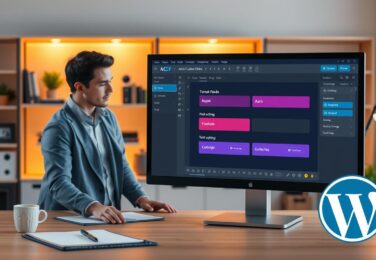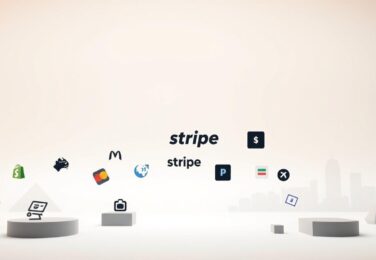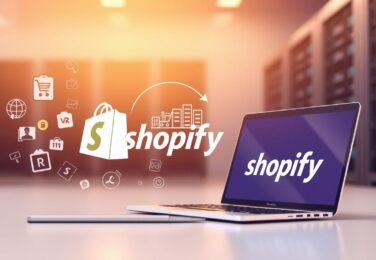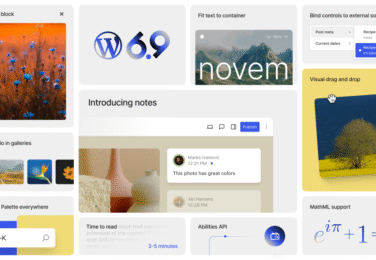How much does it cost to hire a Shopify developer?

Table of Content
We know the worry that comes with launching or fixing an online store. You might be juggling stock, marketing and a design brief while wondering how much a skilled developer will cost. We’ve seen business owners feel overwhelmed by quotes that vary wildly, so we focus on clear scopes and predictable pricing.
We explain what really drives cost — from small theme tweaks to custom apps and complex API work — so you can plan with confidence and avoid surprises. Our approach aligns timelines, delivers outcomes that boost your ecommerce business, and helps you decide when a single developer or a wider team is needed.
Need help right now? Email hello@defyn.com.au and we’ll help you get started with a practical plan for your shopify development needs. Hire Shopify experts sydney to ease of your online transition, We are shopify partner based in Australia.
Key Takeaways
- Costs vary by scope: tweaks, design, apps and integrations change the price.
- We scope work early to keep timelines and budgets predictable.
- A single developer suits small fixes; a team is smarter for complex stores.
- Off‑the‑shelf apps can cut cost; custom apps are justified for unique needs.
- Ongoing services like maintenance should be budgeted for total cost of ownership.
What determines the cost of hiring a Shopify developer in Australia
How much you pay depends on what you ask the team to deliver. Small tasks like a theme tweak take less time. Custom apps, integrations and checkout work need planning, testing and documentation, so they cost more.
Platform specifics also matter. Advanced shopify features, payment logic and checkout customisation add effort. Compliance and extra payment methods increase testing time.
Catalogue size and UX shape the build. Many products or variants require careful data modelling and performance tuning. Bespoke web design and accessibility lift conversion but extend timelines.
Team mix affects the quote. A senior developer speeds delivery; adding a front end specialist, QA or a broader development team raises day rates but reduces rework. Local Australian teams help with collaboration and faster decisions.
Quick comparison
| Factor | Low effort | High effort |
|---|---|---|
| Scope | Theme tweak | Custom app / integration |
| Catalogue | Small range | Large range, many variants |
| Checkout & payments | Standard setup | Subscriptions, multi-currency |
| Team | Single developer | Senior + front end + QA |
If you’re struggling with customisation, contact hello@defyn.com.au and we’ll help align scope and budget for your online store.
Common pricing models and what fits your project
Different billing models shift risk, speed and predictability for a web project. Choosing the right option helps you meet timelines and revenue targets while controlling cost.
Fixed-price
Best for well-defined scopes. We lock deliverables, timelines and cost after discovery and design development. This reduces surprises but needs good upfront detail.
Time & Materials
Ideal when requirements may change. You pay for time and get flexibility to iterate from analytics and user feedback. T&M speeds early value and can boost revenue by prioritising what works.
Dedicated team option
Suited to ongoing roadmaps. A cross-functional team becomes your extended capability. Sprint rituals, backlog management and transparent reporting improve velocity and knowledge retention.
When integrations or third-party apps add uncertainty, T&M or a dedicated development team often reduces risk more than rigid fixed-price contracts.
| Model | When to use | Key benefit |
|---|---|---|
| Fixed-price | Clear scope, stable integrations | Predictable budget and end date |
| Time & Materials | Evolving requirements, testing live users | Flexibility and faster starts |
| Dedicated team | Long-term roadmap, multiple stores or channels | Higher velocity and ownership |
We help choose the right model based on complexity, risk and urgency. Many clients blend models—fixed for an MVP store and T&M for ongoing enhancements—to balance predictability and agility.
Typical price ranges by Shopify service
Pricing depends on scope and risk. We group common services so you can see where cost sits and which choices change the quote. Below we outline typical ranges and what drives each band.
Theme design and development
Theme setup and configuration is the most cost-effective route. This covers installing a premium theme, applying brand styles and configuring core settings for your online store.
Custom theme builds add time for bespoke layouts, advanced sections and conversion-focused components. Expect higher investment for unique UX and reusable components.
App development and integrations
Custom app work raises costs because we design endpoints, handle webhooks and use GraphQL or REST. Complexity depends on third-party docs, rate limits and authentication.
Where possible we suggest existing apps to reduce build time. If gaps remain, targeted custom apps solve specific functionality needs.
Store optimisation
Optimisation focuses on speed, image strategy, Liquid efficiency and conversion-led web design. These efforts often deliver strong ROI without a full rebuild.
| Service | Typical range (AUD) | When to choose |
|---|---|---|
| Theme setup | $800–$3,000 | Quick launch, minimal customisation |
| Custom theme | $4,000–$30,000+ | Bespoke UX, many products |
| Apps & integrations | $3,000–$50,000+ | Complex APIs, data mapping |
We estimate based on complexity, reusability and performance targets and align our team to keep delivery lean. Transparent options let you control trade-offs between timeline, budget and feature depth.
Shopify Development
Our team takes care of every step, from discovery to post‑launch support, so you can focus on growth.
End-to-end services for stores and apps
We deliver discovery, design, build, test, launch and ongoing support for your store, websites and custom app needs.
Cross-discipline team, single accountable partner
Our team blends strategy, front end and back end developers to cover theme work, performance and analytics.
This keeps user experience consistent and revenue-focused.
Custom apps and integrations
We design shopify app solutions that cut manual work and add unique functionality.
We also integrate ERPs, CRMs, shipping and marketing tools to centralise data and streamline operations.
| Service | What we deliver | When to choose |
|---|---|---|
| Store build | Theme, UX, testing, launch | New store or major redesign |
| Custom app | APIs, webhooks, bespoke workflows | Unique automation or features |
| Ongoing support | Retained squads, CI/CD, optimisation | Continuous growth and uptime |
One company, clear outcomes. We guide plan selection to match your stage of growth and keep releases stable and repeatable.
Our development process that protects your budget
To protect budgets, we stage all work in dedicated partner stores before launch. This keeps your live online store untouched and reduces rework.
How we de-risk builds:
- We build first in partner stores that mirror most Advanced Shopify functionality. These stores are free and unlimited for partners.
- We enable generated test data to simulate real catalogues, demo orders and page flows for quick validation.
- We run unlimited test payments via the Bogus Gateway so checkout logic and edge cases are exercised safely.
What to expect and limits: development stores cannot process live payments with active providers, install most paid apps, exceed private app caps, or be transferred to paid plans. Developer previews give early feature access but share similar transfer limits.
Handover and maintenance: We transfer ownership via the Partner Dashboard and then continue support through collaborator access. We also archive and unarchive stores to match project phases and keep environments tidy.
We document environments, tools and test assumptions so constraints are clear and budget allocations realistic. If you’re struggling with Shopify customisation with your developer, email hello@defyn.com.au and we’ll stabilise your store and roadmap next steps.
Why choose a Shopify Partner with agile, DevOps and security baked in
A mature partner that blends short sprints, automated releases and security-by-default keeps your website stable and fast.

Agile delivery is more than meetings. We run short iterations, demo value early and refine the backlog to cut rework and speed time to market.
DevOps: reliable releases and shorter lead times
Automation matters. Our toolchain standardises builds, testing and deployments so releases are auditable and repeatable across partner and live stores.
Security-first: protect data and revenue
We enforce SSL everywhere, schedule routine backups and apply least-privilege access. Secure coding patterns — output sanitisation, DB abstraction and CSRF tokens — reduce attack surface.
We also use native fraud tools like Flow and Fraud Protect and can integrate advanced options such as NS8 where risk warrants.
Performance metrics: measurable speed and stability
- We set targets for TTFB, page speed and apdex before work starts.
- Spikes and load tests protect critical payment and checkout paths that drive revenue.
- Transparent reporting shows deployment frequency, cycle time and incident trends for stakeholders.
The right team composition—front end specialists, back end integrators and QA—reduces cycle time without inflating budgets. Choosing a certified shopify partner with this maturity lowers operational risk and supports sustained growth.
Timelines, ROI and when to invest in advanced functionality
Start with small, high-impact changes that lift conversion before committing to big feature builds.
We begin with quick wins—performance fixes, UX tweaks and analytics-led tests. These deliver measurable revenue gains while we scope larger work.
From quick wins to phased projects
Advanced features like custom apps, deep integrations and complex merchandising are phased after we validate assumptions. Phasing reduces risk and keeps returns steady.
Aligning plan, tools and budget to revenue goals
We sequence sprints so each delivers value. Our timelines account for third-party APIs and stakeholder availability to avoid idle time and budget leakage.
- Plan data structure and search when your products or catalogue expand.
- Run parallel content and QA streams to shorten overall time without overloading your team.
- Choose the right app or custom build—balance upfront cost with long-term ownership.
“Small wins fund big bets—measure speed, engagement and conversion to justify the next phase.”
We track leading indicators (speed, engagement) and lagging indicators (conversion, AOV, LTV) so clients see clear ROI and can adapt the roadmap as the business evolves.
Get started with a local Shopify development company in Australia
Start locally with a team that understands Australian retail, logistics and compliance. We’re based in Sydney and support clients across Melbourne, Brisbane, Perth and beyond.

Sydney to Melbourne, Brisbane, Perth and beyond: local team, global standards
Work with an Australian team that blends hands‑on collaboration and global delivery standards.
We mobilise quickly: tell us your goals and we’ll propose the right mix of roles and a clear first sprint to get started.
Struggling with Shopify customisation? Email hello@defyn.com.au
If your online store needs stabilisation, we prioritise critical fixes then plan structured enhancements to restore confidence.
- Audits: theme, apps and web stack to find bottlenecks and quick wins.
- Options: scoped services or retained team models to suit your budget and cadence.
- Outcomes: performance, SEO and accessibility baselines aligned with brand design.
- Communication: regular updates, working demos and clear action lists.
To get started, email hello@defyn.com.au — tell us your goals, timeline and constraints and we’ll outline a practical plan you can trust.
Conclusion
Good scoping and a steady process turn complexity into predictable outcomes.
Cost to hire a developer hinges on scope, platform specifics, data complexity and the team you choose. Clarity up front saves time and money in the end.
Match the pricing model to the work: fixed for clear scopes, time & materials for evolving needs, or a dedicated team for ongoing services across stores and pages.
Protect budget by building in development stores, testing with real data and handing over ownership cleanly when the plan reaches the end stage.
Prioritise security, performance and reliability so each release improves conversion rather than adding risk. When fundamentals pass, phase advanced app and design work for clear ROI.
We’re ready to help—email hello@defyn.com.au for a tailored plan and a confident next sprint.










